"The Valley 8mm Club of North Hollywood has turned toward drama for its newest scenario production. A touching story of a sick mother in rather meager circumstances and in need to medical care. The youthful daughter and the druggist carry out the leading roles with effective realism. There is a remarkable accomplishment of lip sync as needed in a few places through the use of strobe-tape. The dramatic ending completely detaches us from the mother's illness" PSA Journal, Nov. 1959, 47.
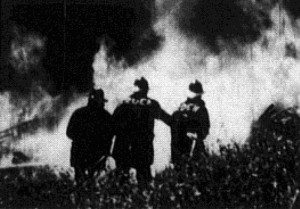
"Civil defense is the theme and purpose of this bit of realism-disaster, fire, dead, and injured. How the emergencies are met through planning and co-ordination of the fire department, police, medical corps, volunteers, and ham radio operators. The film is descriptive of the hundred and one things that must be coordinated to meet a disaster. A good civil defense picture" PSA Journal, Oct. 1961, 49.
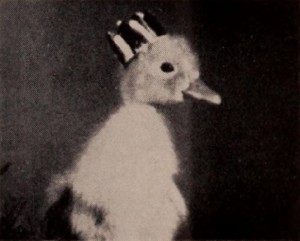
"Denny Plumlee credits Hy Knaack as associate cameraman on this unusual film, which demonstrates excellent miniature settings, lighting, and camera treatment. Together, the two have given cine filmers something new to top in amateur movies. A sound-on-film production in 16mm Kodachrome, the narration is a masterful job and contributes considerably to building and sustaining interest in the picture." American Cinematographer, May. 1952, 222.
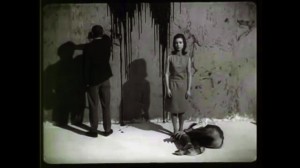
“İlk film çalışmalarını Paris’te gerçekleştiren Heper, Galatasaray Lisesi’nden mezun olduktan sonra önce hukuk okumak için Cenevre’ye gider lakin mutlu olamaz ve okulu bırakarak Fransa’ya geçip, Paris Yüksek Sinema Enstitüsü’de (Institut des Hautes Etudes Cinématographiques – IDHEC) sinema eğitimi almaya başlar. Bu okuldan ‘En İyi Yönetmen’ ünvanı ile mezun olan yönetmen, bu dönem (1963 yılında) gerçekleştirdiği iki kısa filminden ilki olan ‘Bir Kadın’ ile IDHEC, ikinci kısa filmi Şafak ile de hem IDHEC hem de Avusturya Kültür Bakanlığı En İyi Film ödülünü almıştır.” Burak Çevik, Sinematek.tv: http://sinematek.tv/alp-zeki-heper-ve-iki-kisa-filmi-bir-kadin-safak/ (15 November 2019).
“Graduated from Galatasaray Highschool, Heper first went to Geneva to study law. Because he was unhappy in Geneva, he left the law school and went to Paris to study filmmaking at Institut des Hautes Etudes Cinématographiques (IDHEC). He graduated from IDHEC with the award, “the best director.” The two student short films, Bir Kadın and Şafak, made by Heper when he was at IDHEC, received the best film awards from both IDHEC and the Austrian Ministry of Culture. Burak Çevik, Sinematek.tv: http://sinematek.tv/alp-zeki-heper-ve-iki-kisa-filmi-bir-kadin-safak/ (15 November 2019).
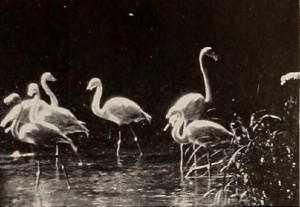
"By a clever editorial feat, Charles H. Benjamin has transformed a series of animal scenes which he filmed at New York City's Bronx Zoo into a pseudo travelog of the African game belt. He achieved this effect by simply cutting shots of heavily wooded streams into footage of the uncaged animals in the famous zoo, and the illusion is pointed up by some striking title frames. Mr. Benjamin's camera work matches his editorial insight, for his exposures and composition are first rate. His use of back lighting gives his shots of flamingoes and drowsing lions a brilliance that puts them far above the usual run of animal pictures." Movie Makers, Dec. 1946, 488.
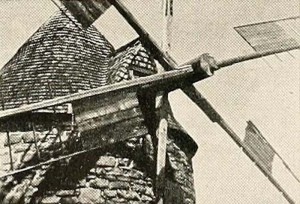
"The majesty of one of North America's greatest rivers is the theme of Walter Downs's Saga of the St. Lawrence. Stunning Kodachrome views of this mighty stream picture it from the decks of a river steamer. The ship is used as a mechanism for carrying the continuity theme forward and for providing smooth "trucking" shots of the passing shoreline. Brief stops offered the opportunity for sequences that show the character of the country and its people with the sympathy and understanding of one who knows the region well. These also punctuated the film in a pleasant and interesting fashion. The picture is accompanied by a musical background and some sound effects, all done by double turntable. This is a gracious and capable film of high photographic quality." Movie Makers, Dec. 1937, 630.
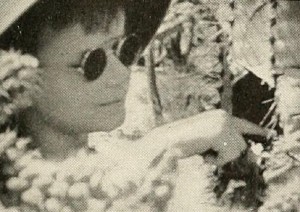
"Sahuaro Land, by Frank E. Gunnell, is as clever and painless a teaching film as one may find in many a classroom screening. Here, in a colorful Arizona cactus desert, we find the surefire ingredients of a boy and his dog. The boy is an enthusiastic nature student who, in the course of his explorations of the region, contrives to make sundry entries in his notebook, which find their way to the screen. These data are all so natural a part of the story, however, that the information conveyed does not assume the rather forbidding status of an instructional title in any case. The outdoor color work is excellent, and the viewpoints are well chosen. Mr. Gunnell's use of telephoto technique for making closeup studies of distant, inaccessible objects (such as the bloom atop a tall cactus) was particularly effective. We learned a lot from this film." Movie Makers, Dec. 1940, 604.
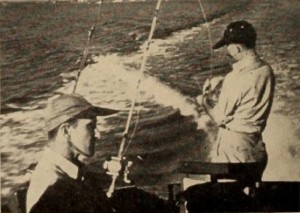
"Al Schmidt's Sail Fishing is a well edited and engagingly pleasant presentation of a theme that might easily get out of hand. Mr. Schmidt has covered all aspects of an exciting sport, including the rarely mentioned sharks. However, the greatest virtue of Sail Fishing is not the film itself but the accompanying narrative, which is delivered calmly and with a good deal of humor. Mr. Schmidt has proved that sharks are exciting in their own right, instead of as a backdrop for a babbling and frenetic narrator." Movie Makers, Dec. 1949, 471.
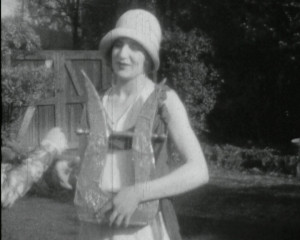
"Sally yearns for the better things in life. Her mother takes in washing and asks Sally to return some laundry. En route, Sally peers over the gate of a house. She is spotted by the owner, Mrs Bond-Regent, who has just returned from shopping for her niece's garden party to learn that her maid has left. Sally is dragooned into becoming the maid for the afternoon. The film involves Sally's mishaps. The guests, who are all women, include an artist, a musician, an actress, a dancer, a representative of The Simple Life League, and a woman dressed like a man (whom Sally mistakes for a man). Despite her shortcomings as a maid, the guests all see wonderful potential in Sally and try to teach her their respective arts, but to no avail. After being persuaded to smoke a pipe, Sally flees the party and returns home, eschewing the better thing in life" (EAFA Database).
Total Pages: 203